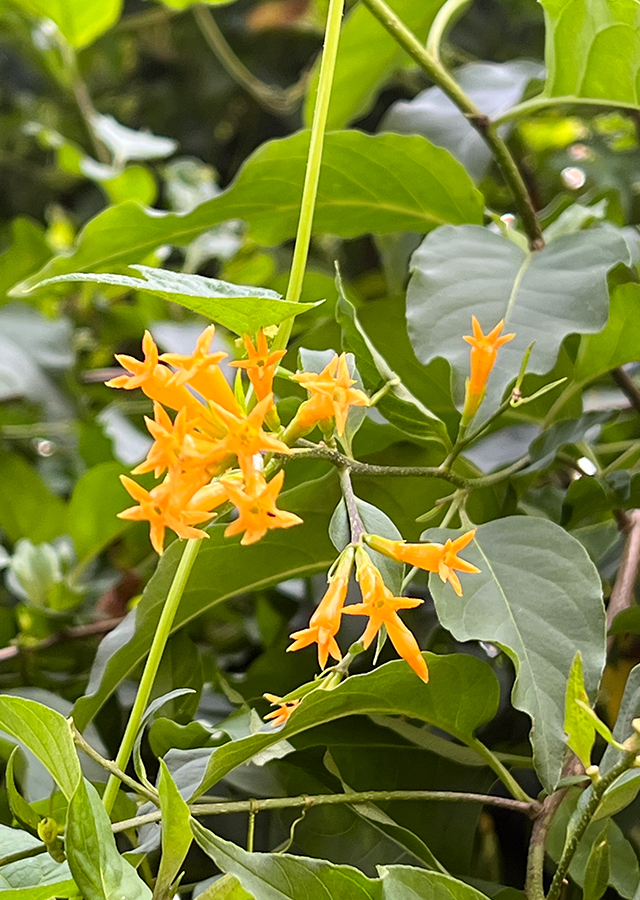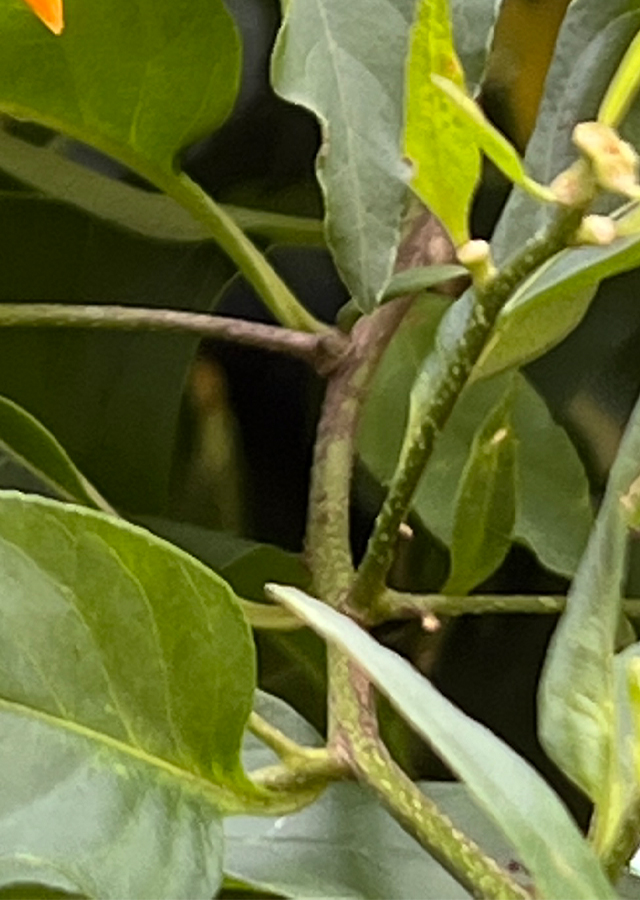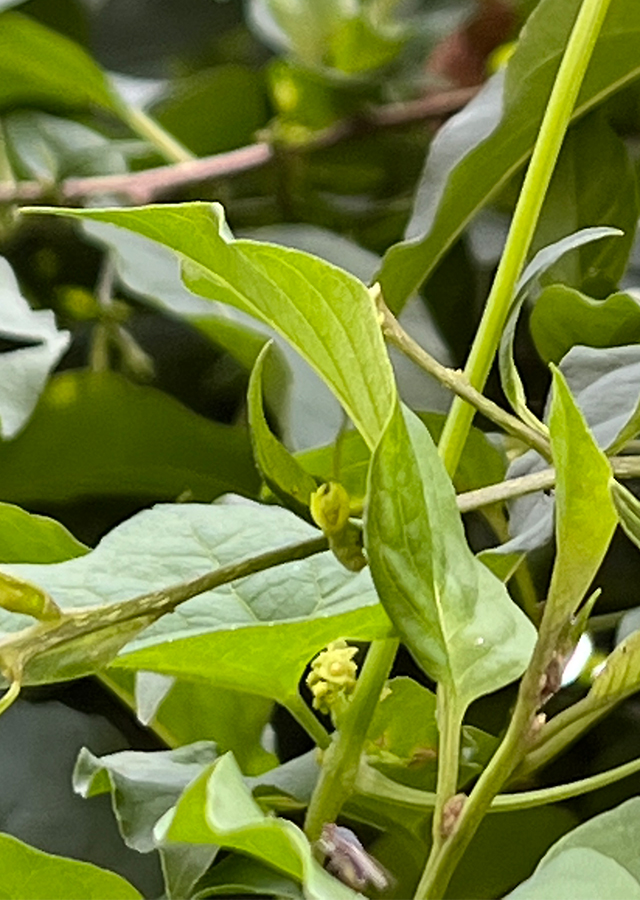Yellow Cestrum
Cestrum aurantiacum Lindl.
Solanaceae
Location in our garden
Principal



Synonym
Cestrum auriculatum Ruiz & Pav.
Cestrum paucinervium Francey
Habrothamnus aurantiacus (Lindl.) Regel
Habitus
Shrubs. Annual shrub, sometimes climbing or creeping, about 1–6.5 m tall
Part Used
Leaves
Growing Requirements
Full Sunshine
Need Shade
Habitat
Forest
Mountains
Roadside
Terrestrial
Overview
Cestrum aurantiacum is an exotic species native to Tropical America from Mexico, Guatamala, Nicaragua, Costa Rica to Venezuela, but is now widely cultivated throughout Africa, as well as in India, Europe, and Australia. This species is widely planted by the community as an ornamental plant because of its striking flower color. Apart from being an ornamental plant, yellow cestrum is also believed to have good health benefits which are used traditionally as medicine. However, this species is notoriously toxic to animals (especially farm animals), and may have a similar effect on humans, if ingested.
Vernacular Names
No information found. Need further search.
Agroecology
Can be found in abandoned gardens, roadsides, forests, mountains and disturbed areas near cities, growing at an altitude between 850–2600 m asl. Prefers fertile, well-drained soil enriched with compost. Prefers areas in full sun or light shade, as shady conditions inhibit flowering and produce leggy plants.
Morphology
- Stems - woody, many branched, branches often lenticel, rarely hairy to glabrous.
- Leaves - alternating, pale green to dark green with yellowish venation, ovate to lanceolate, pointed base, flat leaf edge, leaf tip acute to acuminate, both surfaces usually glabrous, sometimes sometimes coriaceous (like skin/bones).
- Flowers - It has a pungent citrus-like scent, especially at night. Petals narrow tubular, glabrous to sparsely pilose on the outside, lobes narrow triangular to subulate (ligulata) above, tightly rolled edges with lobes extending downward as five dark veins all over the petals, pointed. Crown usually orange to bright yellow sometimes yellowish red, tubular with 5-6 small rounded lobes, lobes broad to narrow triangular, often apiculate, glabrous externally, internally pilose. The anthers are yellow to orange. The ovary (future fruit) is brown in color, oval in shape. The inflorescences are arranged in groups at the ends of the branches (terminal groups) and in the axils of the leaves (axillary groups) in the form of racemes or panicles.
- Fruits - berry subsessile, white, cream or yellow, ovoid, small.
- Seeds - 1-5(–8) per berry, dark brown or black in color, ellipsoidal, prismatic, usually curved.
Cultivation
Propagated by stem cuttings.
Chemical Constituents
Steroidal saponins, sterols, catechol tannins, flavonoids, fatty acids (myristic, palmitic stearic, oleic, linoleic), -amyrin, -sitosterol
Traditional Medicinal Uses
Treats itching on the skin and has antimicrobial activity.
Part Used
Reference Sources
- Royal Botanic Gardens. Plant of the World Online: Cestrum aurantiacum Lindl. https://powo.science.kew.org/taxon/urn:lsid:ipni.org:names:814910-1. 04-04-22.
- Flora Fauna Web. 2022. Cestrum aurantiacum Lindl. https://www.nparks.gov.sg/florafaunaweb/flora/3/6/3666. 04-04-22.
- Makokha J. 2018. Invasion of Cestrum aurantiacum Lindl. in Kenya. Journal of Environmental Protection, 9: 671-690. DOI: 10.4236/jep.2018.96042.
